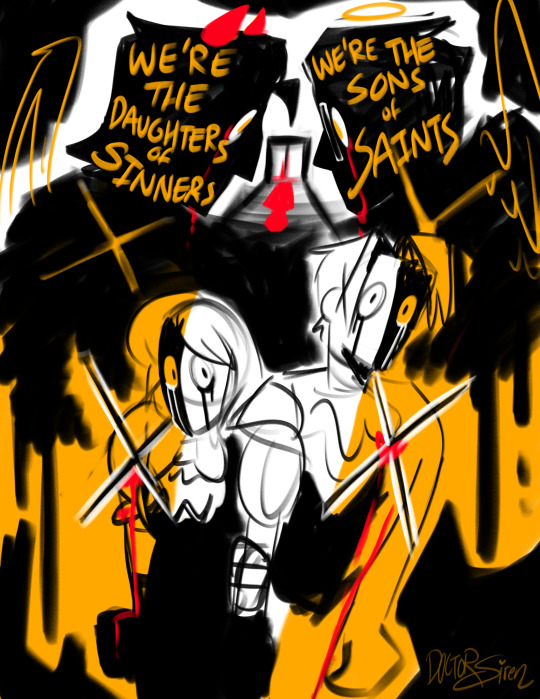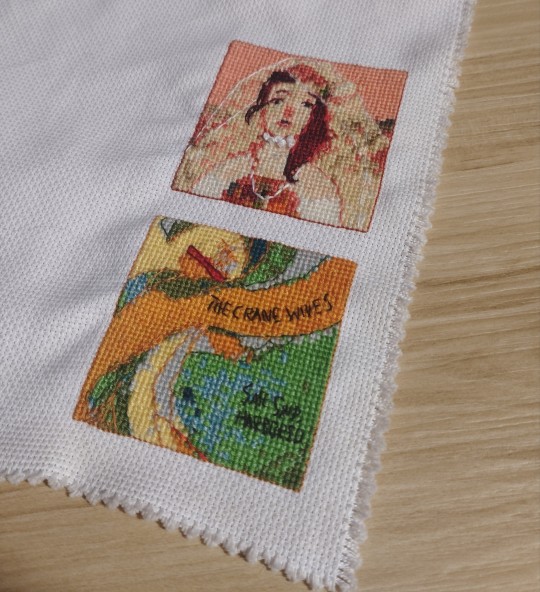#Should Wives Work?
Explore tagged Tumblr posts
Text
The 10th SHORT FILMS Academy Awards held in March of 1938 corresponding 1937 film releases. (1298)

The 10th Academy Awards were held on March 10, 1938 to honor films released in 1937, at the Biltmore Hotel in Los Angeles, California and hosted by Bob Burns. Originally scheduled for March 3, 1938, the ceremony was postponed due to the Los Angeles flood of 1938. 10th Academy Awards - Wikipedia

A Night at the Movies is a short film starring Robert Benchley. A Night at the Movies (film) - Wikipedia
youtube
link https://youtu.be/zn8gAMVA62I
Romance of Radium is a 1937 American short film directed by Jacques Tourneur, Romance of Radium - Wikipedia
youtube
link https://youtu.be/724Do_WYGsA
The Private Life of the Gannets is a 1934 British short documentary film, directed by Julian Huxley The Private Life of the Gannets - Wikipedia
youtube
link https://youtu.be/aOtirKYYDrs

Torture Money is a 1937 American short crime film directed by Harold S. Bucquet. Torture Money - Wikipedia
link https://ok.ru/video/2128385346228
Should Wives Work? is a 1937 American short comedy film directed by Leslie Goodwins. Should Wives Work? - Wikipedia
youtube
link https://youtu.be/NMuGpdvJQ4c

Penny Wisdom is a 1937 American short comedy film directed by David Miller and produced by Pete Smith. Penny Wisdom - Wikipedia
youtube
link https://youtu.be/kD5d5fR5B_w
The Man Without a Country is a 1937 American short drama film directed by Crane Wilbur The Man Without a Country (1937 film) - Wikipedia
link https://ok.ru/video/3265168345756

The Old Mill is a Silly Symphonies cartoon produced by Walt Disney Productions, directed by Wilfred Jackson, scored by Leigh Harline. The Old Mill - Wikipedia
youtube
link https://youtu.be/MYEmL0d0lZE
Educated Fish is a 1937 animated short film that was part of Paramount's Color Classics series. Educated Fish - Wikipedia
youtube
link https://youtu.be/UGVtnE-EFW8
"The Little Match Girl" or "The little girl with the matchsticks" is a literary fairy tale by Danish poet and author Hans Christian Andersen. The Little Match Girl - Wikipedia
youtube
link https://youtu.be/5KTy-S3bfvk
#1298#short films#10th academy awards 1938#1937#a night at the movies#Dir. Roy Rowland#Romance of Radium#dir Jacques Tourneur#The Private Life of the Gannets#dir. Julian Huxley#Torture Money#dir. Harold S. Bucquet#Should Wives Work?#dir. Leslie Goodwins#Penny Wisdom#dir. David Miller#The Man Without a Country#dir. Crane Wilbur#The Old Mill#dir. Wilfred Jackson#Educated Fish#dir. Dave Fleischer#“The Little Match Girl”#Dir. Arthur Davis#dir. Sid Marcus#2025-01-10
7 notes
·
View notes
Text

I have an idea (concept sketch that I will make a more refined version of in the morning since it is midnight)
#doctorsiren#ace attorney#miles edgeworth#franziska von karma#gregory edgeworth#von karma siblings#manfred von karma#dl 6 incident#ace attorney fanart#tw creepy imagery#digital art#my art#procreate#work in progress#the crane wives#man good omens is crazy /silly#I really Iike the loose look I have now with it#but I wanna clean some stuff up and refine some bits#but this version is really cool to me already#so I’m posting it :3#I think Miles Edgeworth should get shot in the heart BUT NOT DIE#LIKE HE ESCAPES DEATH#JUST SO WE CAN GET THAT PARALLEL BETWEEM HIS BULLET WOUND AND HIS DAD’S#LIKE HOW ZISKA WAS SHOT IN THE SHOULDER LIKE HER FWTHER#RAHHHH
1K notes
·
View notes
Text

WOAHHHHH BARB aint no one taking her away from you
#abbott elementary#art#barbara howard#barlissa#work wives#melissa schemmenti#that was fun#i should do this more often
58 notes
·
View notes
Text
A Thought I Had. An Idea, Even.
I was thinking about Good Omens, as one does, and I realized that the handful of scenes in which Aziraphale and Crowley raise the Antichrist could be its own show. I am not saying it should have been expanded upon in the book or the TV series, I’m not even saying there should be a spin off about raising Warlock. All I am saying is, this would be a great concept for a show. Imagine, an entire comedy show about an angel and a demon raising the Antichrist.
#david tennant#Good omens#micheal sheen#warlock#antichrist#this should be an entire show#What if it was a comic#Or an indie animation#It would work#if the show was only loosely based on good omens#Not full on fanfiction#and its gay#because i decided it is#ineffable husbands#aziracrow#ineffable wives
78 notes
·
View notes
Text



Abbott Elementary 1×13 | 2×22
#melissa schemmenti#barbara howard#work wives#abbott elementary#lisa ann walter#sheryl lee ralph#abbottelementaryedit#abbottelementarygifs#abbottedit#abbottgifs#dailyabbottelementary#notsosecretlyalesbian#my gifs#i?????????#hello?????#but yes melissa spreading the word that wlw love older women#at least my insomnia is being useful#i really should be sleeping though#these were rushed i'm so sorry loves
1K notes
·
View notes
Note
“i’m not going to write this” you say as you simultaneously create a tag for any future instalments in the same universe. (i see you and i agree lena should have two wives.)
Listen obviously I’m not going to write this story BUT just imagine…. The tension, the forced conversations as Kara and Lena both pretend to still be the women they were all those years ago, pretend like they aren’t strangers with nearly a decade of distance between them. With Kara and Lena experiencing an anxious desperation to get away from each other as deep as their desire to never leave each other’s sight.
Andrea goes to bed before them - she has to, she’s trying to be strong but even she isn’t strong enough to navigate the sleeping arrangement - and when she wakes up in the middle of the night it’s not a surprise to find Lena’s side of the bed empty and untouched. The predictability doesn’t lessen the burn. The guest room sits empty, though, and instead she finds Lena curled up in a ball on the couch with Kara sleeping beside her. Not on the couch, no, instead sat propped on the floor at Lena’s feet, her hands gripping right at her ankles in her sleep. Like she was scared if she let go for a second Lena would vanish.
Everyone wants to know what this means for them - Kara was dead legally, so their marriage was voided in the law, but then Kryptonians mate for life, and it’s not like Lena ever really let her go in her heart - but they have no answers. It’s clear they don’t fit together anymore, not any of them, but the idea of any one of them letting go is unimaginable. So they fight and they fake it and they find ways to connect as the new, scarred versions of themselves, and there’s a palpable jealousy between the three of them.
Andrea can feel Kara’s eyes burning into her when she comforts Lena, when they share well-worn jokes Kara never learned. And Andrea can see the longing in Lena’s every move, every word, and it burns and burns and burns. Andrea stares at Kara and wishes she had stayed dead. Her dreams are filled with the other woman: dreams of her dying again, of her never returning at all. Of her smirk as Lena tells Andrea they’ve run their course because “really, did you think I’d pick you over her?”
Andrea dreams of what Kara’s mouth must taste like, of how her lips and tongue might move against her own, what she must do to have Lena so fully under her spell. Perhaps if she could kiss her then she could know how to give Lena everything she’s been missing for seven years. Maybe then she could be enough for her. She feels almost desperate thinking about it.
And Kara burns just as deeply in her own way, Andrea can feel it. Kara’s eyes track her every move, always studying and analyzing and overwhelming her. The questions are endless every day - tell me about your life, what do you love to do, what makes you tick.
“You are the one person she chose after me. She wanted you,” Kara explains after Andrea’s furious refusal to answer her forty ninth question about her perspective on things. She’s staring at her with a hunger Andrea feels in her toes. “I have to understand. I have to know every part of you.”
Kara looks at Andrea like she wants to devour her whole. Andrea feels the same.
#once again and cannot emphasize this enough…… not writing this#two wives AU#i should work on two doors down lmfaooo I am in my Andrea feels
184 notes
·
View notes
Text


Behold: a fool! A fool that took a whole month of agony to make, but a wonderful fool nevertheless. A lovely lady but no one's baby sort of fool (ft. ssh album cover from the old post)
#the crane wives#the fool in her wedding gown#cross stitch#my art#whoop#i STILL havent gotten the patch paper rip 😭😭#ill post better pics once i get these guys on my jacket#i wonder if i should work on coyote stories/foxlore? i did these two cause theyre my favourites but then againnnnnn#i mean a full set of 4 would be rad#but also i have less incentive to do cause my 2 favourites are already done#eh maybe ill do it some other time#i wanna work on other projects first
202 notes
·
View notes
Text
I fear I’m now obsessed with drawing Crowley again. This is my take on Crowley in some more femme-presenting, fancy dress! Where’s Aziraphale? I dunno, maybe primping in the bathroom in order to impress her gorgeous date…


#God forgive me for my poor image quality#Crowley#innefable wives#good omens#fanart#my art#Yes I know Crowley doesn’t have piercings but I really wanted to give her snake bites and those fang ones#For a slapdash work this is pretty good#No references either (which might be a negative lol)#Should I try my hand as Aziraphale?? I worry I’d butcher her
79 notes
·
View notes
Text
do i spend the entire day crocheting mushrooms to make a little garland or do i spend it drawing my obsession (by obsession i mean mh)? This is the problem with having multiple hobbies.
#Hobbies#art#crocheting#how tf do i tag this#but this is also about drawing marble hornets#So#marble hornets#ig?#GRAHGGGG WTF DO I DO#im gonna end up contemplating it all day and doing neither#Such is the way my autism works#Im just ranting in the tags now#If someone read this far do any of yall have good gremlincore/whatever it would be considered music recommendations#I need shit to listen to thats similar to the crane wives-#And stuff like that#thanks <3#porkbunsaysthings#It should be rambles cus thats what i do#Fuck
30 notes
·
View notes
Text
There is a car
It is morning, and I wake up thirty minutes late.
My husband has already left home. No note or text explains, but I understand.
I wake the kids. As they get ready, I make their lunches. My son gets leftovers from last night’s takeout, my daughter gets an egg sandwich and macaroni salad. They both get a small brownie.
When the kids are done, I rush them out the house and straight to the car.
As I pull out of the driveway, I notice a car parked by the curb. I’ve never seen it before. It’s painted a dark blue, and none of my neighbours own it.
I drive down the lane, and give the car no mind. I need to drop my kids off at school.
It’s there when I come back.
At night, after dinner I stay awake. My husband has already fallen asleep. He has spoken four sentences to me. I look out the window, gazing out at the moon.
The car is still there, illuminated in the light of the full moon.
I gaze at my nieghbour’s driveway. It is empty save for one car.
I stare at the car. I don’t know its make, nor its model.
I go back to bed and fall asleep hours later.
I wake up late. Again.
This time, my husband shakes me awake. I make him breakfast.
The kids are harder to wrangle today, my daughter having had a nightmare last night. I shush her, and bundle them into the car.
I don’t pay much attention to the car parked by the curb.
This night I sleep as soon as I hit the bed.
I dream of large vast places. Places without people. Places where I feel home. Places I feel welcome.
The car is still there that morning. I ask my husband if he’s seen anyone enter or exit it. If he saw it arrive or leave at any point.
“It’s just strange, I guess.” I say.
He gives me a look and a shrug. I don’t bring it up again.
Both the kids are sick today. I make the necessary calls, give them the necessary medicine, and make the necessary meals.
I am about to ask my son if he knows where the thermostat is, when I realize I don’t remember his name. I don’t check their temperatures after that.
I leave the house later, needing to get groceries.
The car is still there.
I don’t sleep at all that night. I tell myself it is because I worry for my children.
I spend the whole night looking at the car.
I wonder if it is locked.
It is 4 am when I decide to check if it is.
I walk out the house. The full moon is out and bathes the car in white light.
It looks almost inviting.
My bare feet feel the grass beneath me. It’s wet. I almost slip, nearly bashing my head across the sidewalk.
The Car doesn’t let me.
I open the door.
I step into it.
I sit down.
I leave.
They welcome me.
#i asked delia#one of my wives#what my fiction tag should be and she said corn pages but im gonna do#yellowed pages#cause that's close enough#anyway here's this i would love some critique#i feel pretty satisfied with it's short length but that doesn't mean it is without problems#just none i have noticed#this is like one of the vibes i wanna nail down for the setting im working on#hope my mutuals enjoy
148 notes
·
View notes
Text
my range to sing something well is rly limited to high sopranos who want to haunt someone. thus eerie soprano. however i am also capable of singing badly in any other range.
#my first vocal lesson many years ago was so embarrassing#bc she didnt specify like... WHAT she wanted me to sing as a 'this is what we're working with' first song#she was like 'just pick something and we'll go from there ^^'#UNFORTUNATELY. i took her word for it and instead of choosing something well known. i did a cover of ribs by the crane wives#and i didnt like match their notes exactly but i sounded decent but also a little haunting. which is usually how i sound when singing well#:') some of us were meant to only sing as the ghosts of fridged love interests idk what to tell you#anyway this is fine because the only songs i ever plan on writing/singing for my novel series that requires the occasional lyric#is haunting folksongs by goddesses and the initial women who died to make themselves a legacy. and mourning lesbians.#so really ive got this in the bag!#this really should have been in my drafts but im having fun and feeling silly :P
9 notes
·
View notes
Text
Angelberga was a peculiarly prominent personality in manifold aspects of European politics [in the late 9th century. Born to the Supponid family of Italy, she married Emperor Louis II and had several opportunities to establish her position as an active and controversial player in the vicissitudes of her husband's reign]. She acted as Louis's regent, accompanied him on expansionary military campaigns in the south of the peninsula and represented him at [congresses, tribunals, and diplomatic negotiations]. Strikingly, she was also the beneficiary of a spectacular collection of charters. Almost one in seven of Louis II’s extant charters were issued in her favour. Angelberga’s conspicuous exploits in the field of charter acquisition did not diminish after the emperor’s death, and this helped her to maintain a position as a key power-broker in Italian politics, control of land [particularly monastic foundations] being a fundamental building-block of power in this period. In the interregnum following 875, during which Charles the Bald of West Francia and Karlmann of Bavaria fought to claim the succession to the heirless Louis, Angelberga herself conducted the negotiations and decided the loyalty of a major sector of the Lombard political community. She maintained this high profile until her death [having supported her son-in-law Boso's quest for power, endured a temporary exile, maintained the support of Pope John VIII, and founded the monastery of San Sisto in the city of Piacenza, where she probably ended her days sometime before 891].
— Simon MacLean, "Queenship, nunneries and royal widowhood in Carolingian Europe"
#historicwomendaily#angelberga#Louis II of Italy#Italian history#Carolingian period#9th century#my post#Angelberga is wildly fascinating to me#She's been described by numerous historians as 'the most openly powerful of the Carolingian royal wives' (Fiona M. MacFarlane)#'The first Carolingian royal woman to take a fully public role in government' (Phyllis G. Jestice) etc#In many ways this is dependent on the Carolingian paradigm of royalty which differed from its Merovingian predecessors#and which saw queens conducting their activities on a primarily domestic/spatial level#with significantly reduced indicators of autonomy and oddly obscured importance/influence in contemporary sources#(That didn't necessarily mean a reduction in importance - just a shift in what that importance actually meant and should contribute to)#In that framework Angelberga's wide-ranging public activities do seem to have been the 'exception'#It's all the more notable considering the fact that she never had a son#Which is yet another thing I find very interesting with her - how her lack of a son affected various spheres and events of her life#Predictably contemporaries and chronicles viewed her as a controversial figure who was arrogant and insolent and sexually transgressive#(shocker)#also her name has many spelling variants in sources and history books - I'm using Angelberga to make it consistent#and because it was how La Rocca (the first historian whose work of her I read) referred to her
25 notes
·
View notes
Text




you'd think she was talking about his husband with how unwarrantedly she dropped that mid-conversation
#housemdedit#houseedit#hilsonedit#house md#gregory house#allison cameron#her brain was like 'how does wilson put up with this 24/7'#which necessitates for them to be together 24/7#(and thats why wilson's wives keep filling up divorces)#a more patient person than me would use the last 2 lines to make an entire gifset of wilson reacting in these situations#and that more patient person should definitely get to work and tag me in their post#if that doesn't happen though i'll attempt to keep an eye out for scenes and make that gifset myself in... however long that takes#western tv#*new
112 notes
·
View notes
Text
Oh god someone take my brain away from me.
Here’s a potentially weird concept. That I just came up with. Minutes ago.
Forget the Citadel of Starco, yeah, forget it. What about a fucking… Citadel of Toffee’s wives/husbands/partners. They’re just. All together. In one place. Mingling.
I know he’s shipped with a ton of OCs maybe I just want to see them interact yk?? I feel like a lot of them are so different yet would get along so well.
Don’t ask about canon characters since I feel like there’s a ton of different versions of those, and I wouldn’t want ALL of them to be there, there’d be WAYYY too many Moons and Rasticores if that happened. They’d kinda overflow the place yk?
But crossover ships. I think. Those would be acceptable. Maybe.
Maybe this would be primarily OCs though. I dunno, and maybe this idea is so cursed, but I had the thought and had the impulsive urge to share it with the world.
Yeah. A place where the numerous amount of OCs that people made to ship with Toffee. Just. In one place. Perfect. It’d be a really sweet place for a collab I think.
#svtfoe#star vs the forces of evil#toffee of septarsis#toffee svtfoe#svtfoe toffee#toffee x oc#oc x toffee#would Oreo be in her canonical cat form or her outdated human form??#I think it’d be funnier if there was#all these people#and then just a fucking cat#so yeah Oreo is a cat here#I’ve seen so many toffee x oc pairings#and it’d be fun if they mingled#since they all technically dated/married a different timeline version of the same guy#guys I’m so weird#I’m working on half a brain#if I get pulled through the ringer for suggesting this oh well#I may delete this out of shame if that happens 💀#TOFFEE X OC PEOPLE SHOULD COLLAB MORE#MAKE THE WIVES AND HUSBANDS INTERACT#INTERACTIONNNNNNNN !!!#god I hope no one has come up with this before#I’d be so embarassed fr
20 notes
·
View notes
Text
oh Sophia is the biggest golden wives believer because what the hell was “okay, I want to see 6 hands above that blanket right now” (season 3 ep 11. 14:05)
#Also :’) the way rose cuddled up to Dorothy :’) like she’d done it a million times :’)))))))) im going to be sick they’re so in love#anyway Sophia that was a WILD comment LMFAO#I DARE THESE WRITERS TO BE SUBTLE#THEY SHOULD HAVE BEEN CANON !!!! IM GOING INSANE !!!! THAT WAS EVIL WORK#Sophia is their biggest fan and would be their biggest supporter (*is* their biggest fan and supporter)#I’m running circles around my room right now someone hold me down I’ll fly out the window#the golden girls#golden wives#personal
18 notes
·
View notes
Text
It’s not creativity if you wait for other people to take the leap of faith of trying new things and then taking advantage of the results that show people actually like diverging from the same old stuff.
#Liz speaks#Liz rants#I’m not saying don’t try new things#but don’t act like they’re you’re original ideas that YOU came up with#especially when these ideas have been around for forever as mere concepts#and you piggy back off of other authors because you’ve seen these works do well#if you do it because you’re genuinely inspired? great!!!#if you’re doing it because you want notes and for people to praise you? not great!!!!#literally write what you want to write but it better be because you’ve been inspired to#and that inspiration should be for the love of the trope/au/art form/etc and not because you see a concept get super popular#and you feel you need to do it to be relevant#and if you write something that’s inspired by another person’s fic or idea? tell them that! be honest! give that person credit!#idk man like this feels like very basic shit but there are mean girl/trad wives everywhere
5 notes
·
View notes